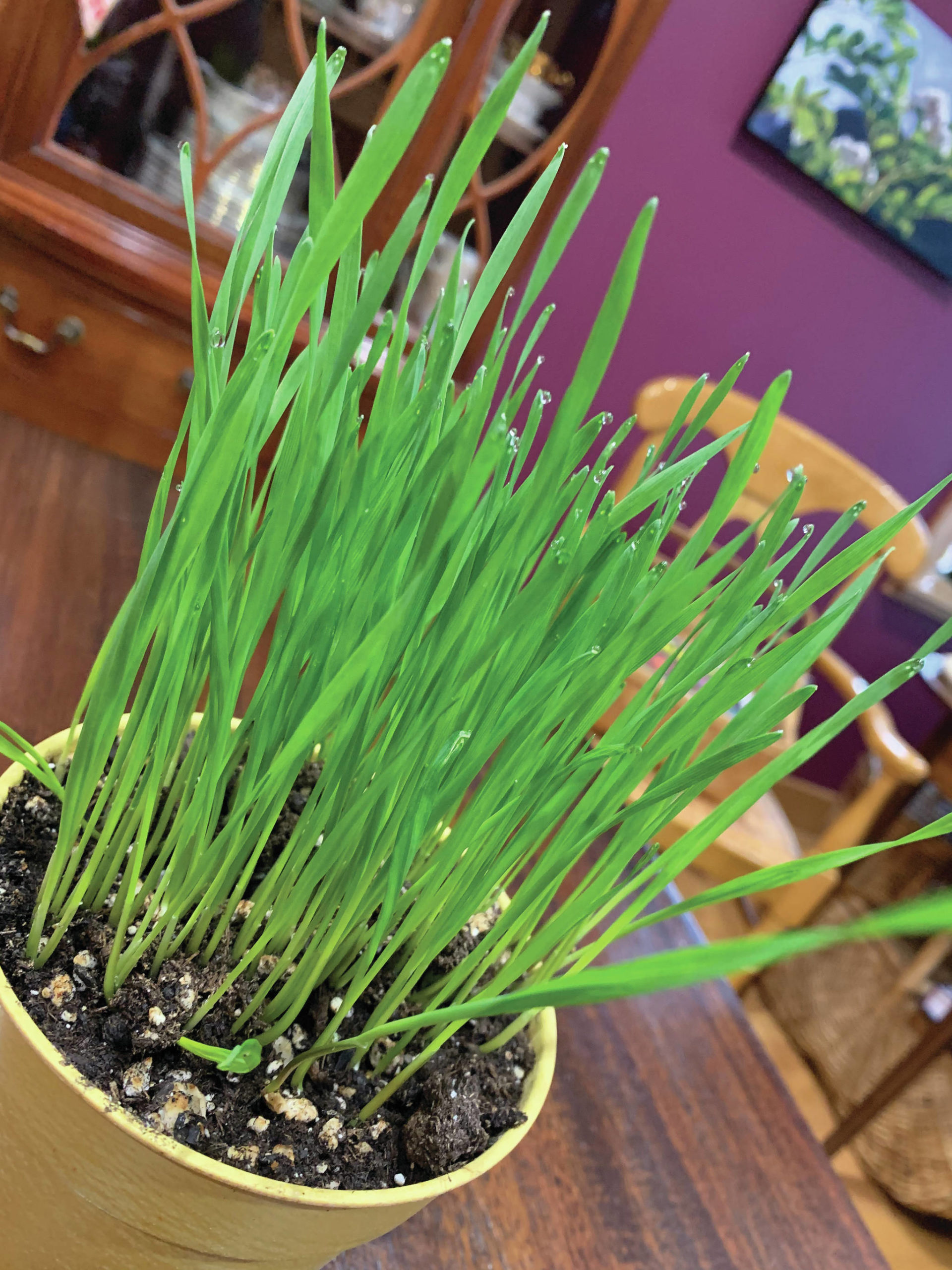Let’s take a look at your seedlings. Do they have enough light? Good. I like to turn mine every day as they tend to bend toward the light even though they are directly under the bulbs. Water is crucial — too much or too little can spell doom. Just keep them damp, you’ll get the hang of it, but check every day. As the seedlings mature you may need to water twice a day. Yes, you are now a slave to your seedlings, either embrace this or buy them at the nursery of your choice. By the time all is said and done you will understand and appreciate the cost of a lovely tomato start.
That’s what is under the lights at this very moment: four kinds of tomatoes, two of onion, shallots, one artichoke (one really is enough, they take up a huge amount of real estate), lettuce (four, just enough to get a jump start in the greenhouse), and this and that.
Be sure to have the next size up in pots because your little slips that seem like not much will soon burgeon and need a larger pot. Be ready.
There is one seed starting endeavor that I look forward to every March and that’s starting wheat grass. I grind wheat berries for bread so always have a giant bag on hand. You can get a smaller bag and keep it in the freezer if this will be the one and only event you have for them. Take the pot of your choice (try to make it a lovely one), fill with potting soil, sprinkle the wheat berries, cover them lightly with more soil, water, put in your sunniest window, wait. In a few days you will witness your reward. It doesn’t last long, so I start a new pot every couple of weeks until I either get tired of it or we can see green outside, whichever comes first. If you have chickens, or rabbits, or a lizard, or yourself, by all means recycle it. Mine goes into the compost. This makes an ideal filler for an Easter basket, a touch of reality.
Begonias, how I love my tuber begonias. I have three that live in the window box on the north side of the house. They are combined with pansies, lobelia, bacopa, and whatever else strikes my fancy. This has proven an ideal spot for them, out of the wind (usually), and just enough sun. These are upright, there is a trailing variety, but I don’t have a place for them. They usually can be found in hanging baskets.
Several years ago I left the tubers out on the covered porch to die back before storing them. Then I left the state. Well, it got very cold and the tubers froze. Ruined. I had them for years. They were perfect. Gone. Rats. So, I replaced them but the new ones, much to my dismay, were not the “right” pink. Keep in mind that this flower box has a hedge of bleeding hearts growing beneath and around and over, therefore the color has to be right. Now, the obvious remedy for this is to buy new ones that are the perfect pink. Did I? No. I have suffered with the “wrong” pink too long. This is the year to make the correction.
So, I took a lone tuber (that is the perfect pink) that lives in a lovely cobalt blue pot and had become quite sizable and divided it. Have you done this before? This is my second time. It is unnerving. Laid it out on newspaper on the kitchen counter, took a sharp chefs knife and cut it in half. Yikes. I was hoping for more pieces but it was clearly only going to be two. How did I know? Because there are lovely sprouts already in progress and you need to include sprouts or else you won’t get much of anything. There is also the chance that none of this will work. I let the pieces dry out, probably not long enough, and potted them up. My fingers are crossed. If none of this works, I will visit one of our lovely nurseries …
If you stored fuchsia and/or geraniums you want to get them out and let them meet the light of day. Trim them, pot up in fresh soil, water, put in a sunny window and give them a chance.
Let’s talk about fences. A friend/neighbor has an astoundingly inadequate fence and there is now a moose living in his garden/yard. There have now been several attempts to send her on her way, to no avail. She knows a good thing when she sees/eats it. So here’s the thing: if you’re determined to fence in your garden, do it like you mean it. Ours is 8 feet tall with a hot wire around the top. There is nothing lovely about this fence and I regret that but there it is and, so far, quite effectively deterring moose.
Start thinking about this now. My excellent neighbors on the corner, when they first moved in and thought I might be nice, asked if they could connect their fence to ours. No. Why? Because the moose need to see a way around a fence. If they can’t they will challenge it, simple as that. There is a drainage ditch between us and our excellent neighbors (who really are nice) and that ditch has become a moose corridor. Excellent.
Think about just how much you need to fence, and, really, if you need to fence at all. Living here in Alaska we are surrounded about so very much forest we don’t always think about using native plants in our landscaping plan. Let’s start doing just that. I’m going to address this more as the season progresses so stay tuned.
Rosemary Fitzpatrick is a longtime Homer gardener and has been writing Kachemak Gardener since 1990.


